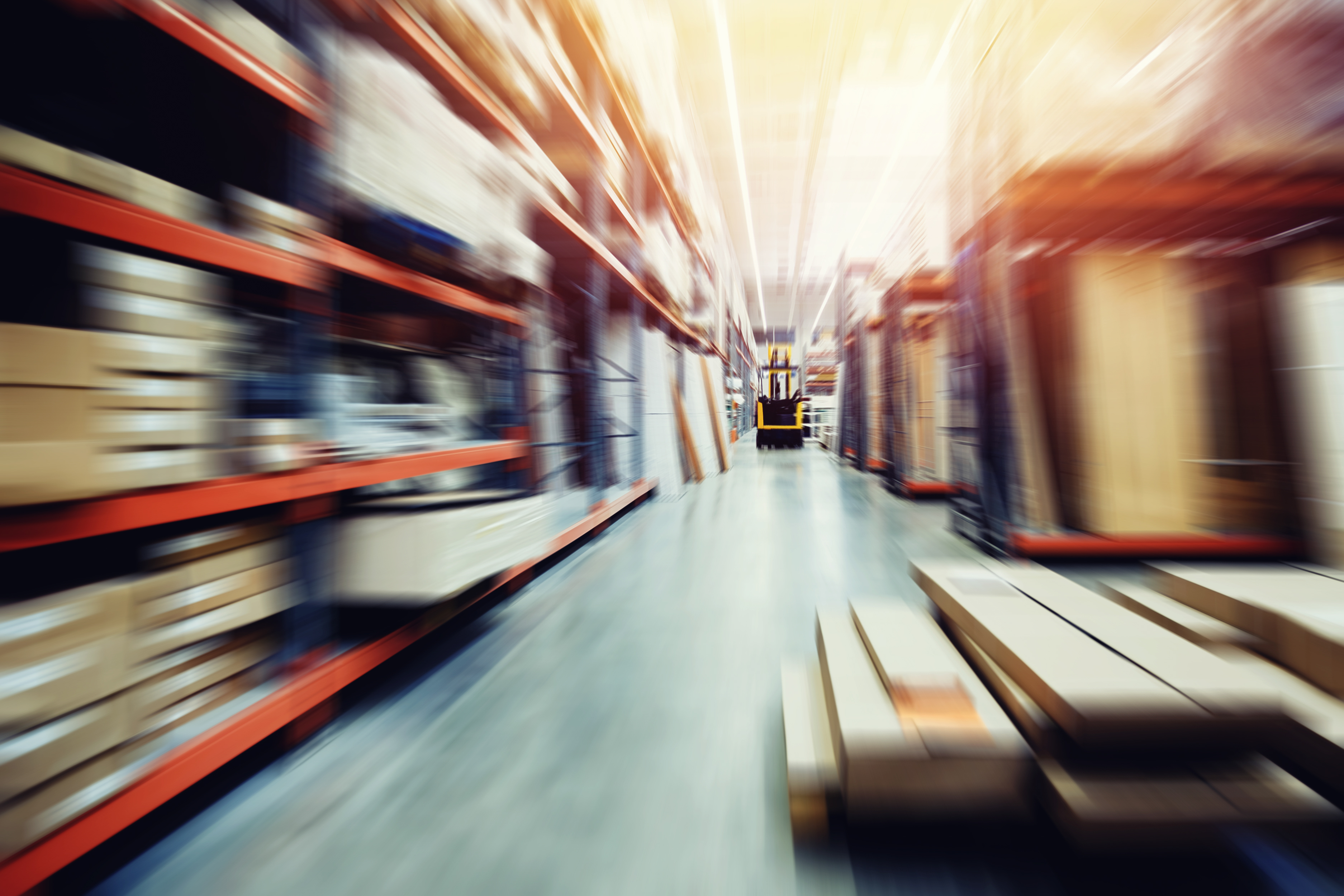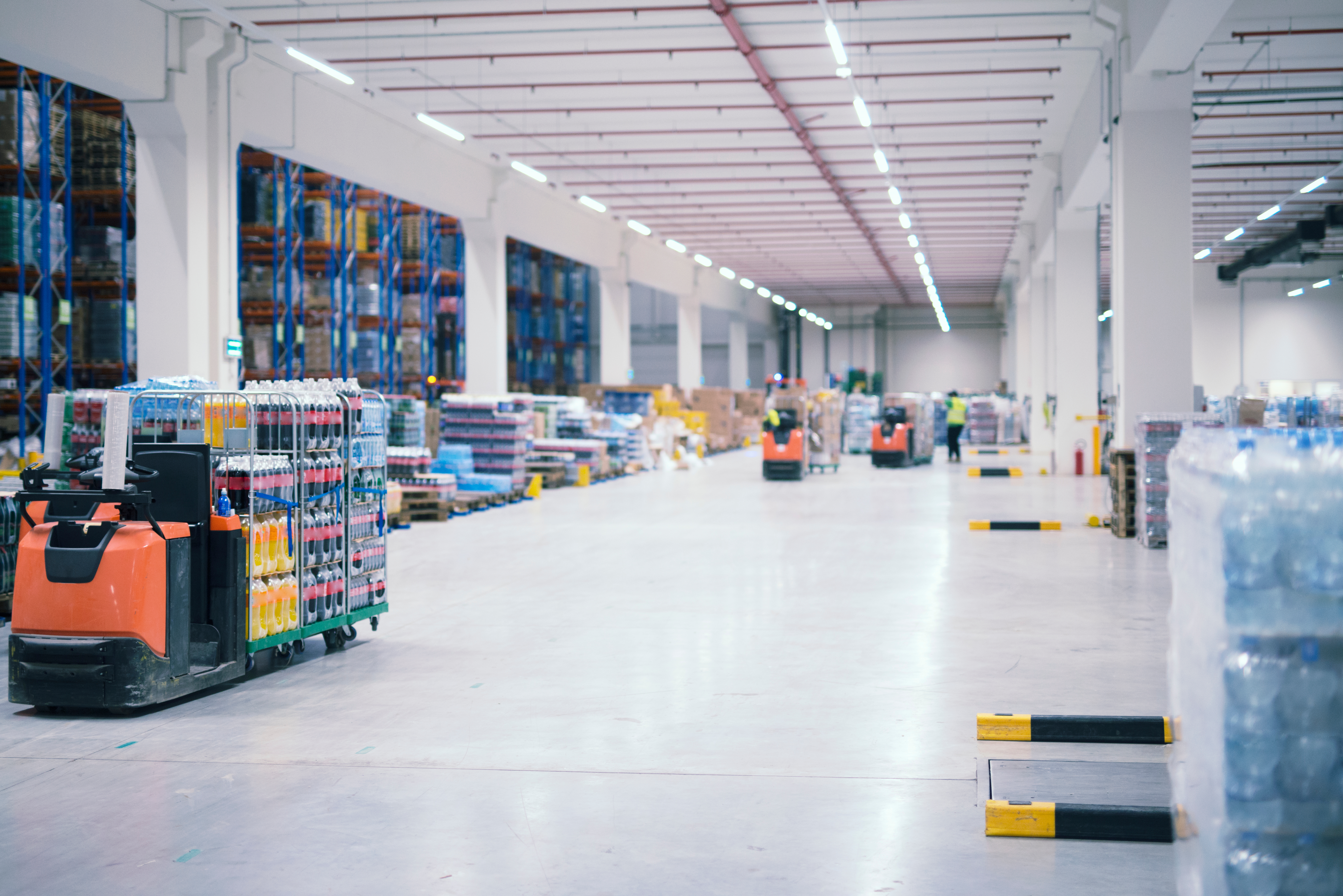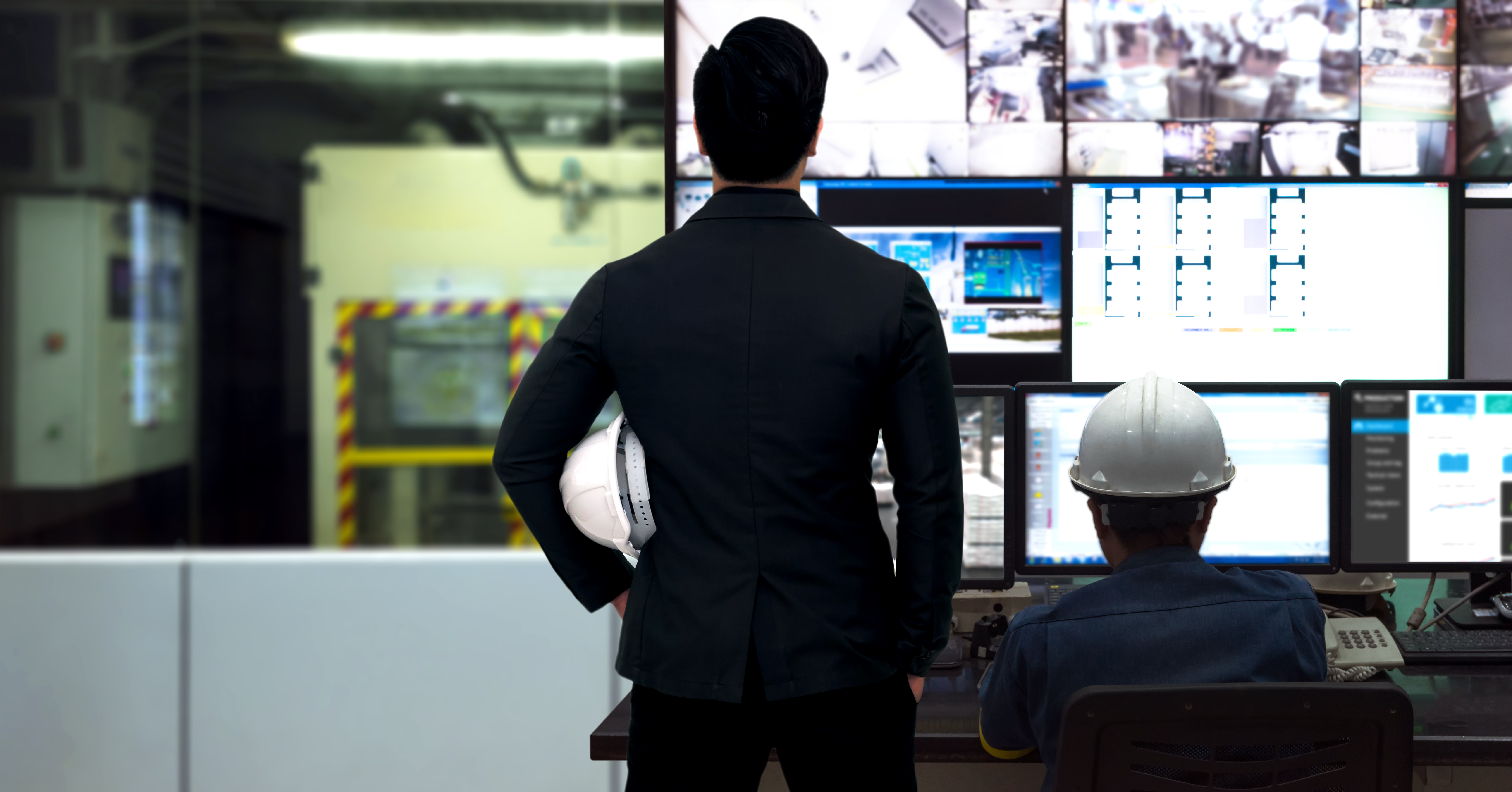
by leanmaterialhandling | Nov 3, 2020 | Factory, Intra-logistics, Lean Manufacturing, Lean Production, Material Handling, Warehousing
Kaizen is a Japanese business philosophy that emphasizes continuous improvement and forms the basis of modern manufacturing and supply chains, among other systems across the world.
The Kaizen philosophy asserts that organizational improvements are a result of small, incremental improvements on an almost daily basis, and require the contribution of all employees at all levels, from CEOs to managers to field staff.
What Does Kaizen Mean?
The word ‘Kaizen’ is derived from 2 words – Kai (change) and Zen (better). Together, the word Kaizen translates to ‘change for better’. It loosely translates to the word ‘improvement’.
However, Kaizen is more than just a word; it’s a business philosophy. It strongly endorses continuous improvement across the organization on a routine basis as the driving force of massive improvements in productivity, efficiency, employee satisfaction, customer satisfaction, elimination of waste, and other aspects of organizational performance.
Why Small Changes?
The Kaizen philosophy urges that every employee within an organization has a stake in its success, and therefore, they all should strive to make improvements routinely at all times. The changes need not necessarily be slow. Also, “small” does not mean insignificant. The Kaizen philosophy recognizes that small changes each day can accumulate together to create massive improvements in the future.
Why is Kaizen Important?
Kaizen is more than an abstract philosophy on self-improvement and continuous improvement. It is a time-tested and proven business philosophy that was developed in Japan to bring revolutionary improvements to the country’s manufacturing industry and supply chains.
Traditionally, Kaizen focuses on 5 guiding principles, which are known as Five S, as described below:
1. “Seiri” Means “Sort Out”
The Seiri principle urges employees to organize their tasks and prioritize them. The tasks must be sorted into different groups and labeled ‘Necessary’, ‘Critical’, ‘Most Important’, ‘Useless’, and so on. Throw away everything useless.
2. “Seition” Means “Set in Order”
Seition is all about efficiency. Reduce wastage of time and energy by organizing everything in a manner that makes it easy to retrieve and use when required.
3. “Seiso” Means “Shine”
Seiso is all about cleaning the workplace and decluttering it. With a “everyone is a janitor” principle, Seiso inspires employees to maintain a clean work area that makes a good impression and, more importantly, keeps the workplace safe, lean, and free from errors.
4. “Seiketsu” Means “Standardize”
Seiketsu is the standardization of the processes involved in Seiri, Seition, and Seiso. The establishment of standard processes and schedules for executing Seiri, Seition, and Seiso routinely ensure that they are done promptly.
5. “Shitsuke” Means “Self-discipline”
Shitsuke is about developing the processes that will enable an employee to execute the other four S, without external stimulus. In other words, it is about inculcating a proactive approach towards self-improvement.
Final Thoughts
As may be evident by now, Kaizen focuses on self-improvement as the path towards organizational improvement. Small but consistent positive changes in oneself and organizational activities are critical to producing paradigm shifts in organizational effectiveness and efficiency.

by Lean Material Handling | Nov 14, 2019 | Factory, Intra-logistics, Lean Manufacturing, Lean Production, Material Handling
Industries require top of the range machines for efficiency and effectiveness purposes. On that account, material handling systems come in handy to deliver fantastic results. They entail equipment that can aid in the mobilization of loads within an area. Thus, they can pick and move products from one place to another seamlessly. The systems primarily operate perfectly due to top-notch technology. They include appliances, tools, vehicles and storage units alike. Well, let’s unearth the key elements around the material handling systems.
Types
Material handling systems fall under four main categories as follows;
-
Storage equipment
-
Industrial trucks
-
Engineered systems
-
Bulk handling equipment
Storage Equipment
It is the equipment that holds materials waiting to be moved to another location for use. Alternatively, it stores products that have already been transported. One vital feature in this kind is that they are not automatic. Depending on the sector, the handling systems are normally spacious. Thus, it allows the stock to be in great condition without any damages. It also makes the items presentable and neat at the end of the production process. In this collection, you will find essential machines such as shelving, sliding racks, and pallet racks. In addition to that, there are stacking frames, push-back racks, and drive-through racks as well.
They are trucks that aid in transportation in various industries. Industrial trucks have different specs depending on their designs. They can be large or small vehicles that can be operated by hand. Most of them are automated to make work more straightforward and painless. The manual trucks are also a form of storage when the items need to be moved after some time. They include pallet trucks that function primarily as mobility tools. AGVs are part of industrial trucks that are utterly powered by other devices. What’s more, pallet jacks, order pickers, side-loaders, and walking stackers are in the group.
Engineered Systems
The material handling systems are also automated to suit the manufacturing process. They come as a complete package with shelves, aisles, and racks. In terms of performance, they are practical as they entail transportation and storage. Furthermore, some machines fully utilize the work of a computer. On the flip side, others will need manual guidance by a small margin. The gadgets have unique characteristics of automatic storage plus retrieval system. Noteworthy examples are conveyor systems, AGVs, and robotics delivery systems.
Bulk Handling Equipment
It handles goods such as food, liquids, beverages, metals, and minerals. The products are in large quantities as the name bulk implies. Essentially, the equipment is utilized for mobility reasons. It transports the loose materials for one pint to another with the utmost safety. The direction it moves is both vertical and horizontal using different bulk handling equipment. The conveyor belt goes sideways while the elevators transport upwards. Hoppers and drummers help to filter out the loose matter for packaging. Under this type, stackers, reclaimers, silos, grain, and bucket elevators are present. The appliances work complementarily to make the procedure triumphant and undemanding.

by Lean Material Handling | Nov 14, 2019 | Factory, Intra-logistics, Lean Manufacturing, Lean Production, Material Handling, Six Sigma
Tugger carts are equipment used to transport materials in various industries. The carts have a towable specification and can also operate manually. Industrial tugger carts form a train when they move goods in bulk. It is commonly known as the tugger train that involves a chain of carts. Their effectiveness is out of this world since, within a short time, one can complete tasks. Workers can move loads painlessly from one location to another. In addition to that, they are used to handle materials in a facility.
Specifications
Industrial tugger carts come in different dimensions or sizes that meet the clients’ needs. The carts are crafted from polyurethane casters so that the noise level is minimal. In addition to that, it guarantees longevity due to the top of the line material. Some carts also come with connection capacities. This way, if you need to move all of them at once, it is possible. The highlight of the feature is that you can transport items faster.
What’s more, the direction is flexible since the cart can move to the right and left with ease. It works ideally when you need to relocate bulky products in a safe mode. Maneuvering through the different paths is seamless with a tugger cart due to its versatility. Another important characteristic is the battery life depending on the machine. It lasts incredibly for hours without the need to recharges the batteries.
Benefits
The carts bring bountiful benefits to the table for all users across the various fields. With the arrays of stipulations, they have countless upper sides. Have a look at the advantages of using a tugger cart.
Safety
Industrial tugger carts have safety stop switches as part of the package. In that case, you can press the switch to avert any injury or damages. You rest assured that with the feature, you will get high safety standards at the company. It comes in handy since any manufacturing process is prone to accidents. To be on the safe side, the switch is definitely essential.
Speed
It is of the essence that tugger carts provide the quickest mobility to the industries. The products come with an awesome speed of about 0-3 mph. For this reason, they can move forward and backward at a fast pace. It means that the operator can have utter control of the device at all times. Furthermore, one can move several items making the procedure time-effective.
Dual Use
Bespoke tugger carts are usable for both outdoors and indoors purposes. Therefore, you can move the materials from the warehouse to an outside location comfortably. They can withstand different terrain due to its world-class design. If the area is sloppy, the cart can move without any hustle. The heavy-duty material is there is to safeguard it from toppling over.
Flexibility
As aforementioned, industrial tugger carts are highly flexible in mobility. Thus, if it operates manually you will not struggle pulling it. The machine comes with a turning radius that is almost zero. Navigating through the pathways is not a daunting task at all.

by Lean Material Handling | Nov 14, 2019 | Factory, Intra-logistics, Lean Manufacturing, Lean Production, Material Handling
Industrial automation is the use of automated control systems and devices such as robotics and computer software to control industrial processes and machinery, resulting in automatic functioning of industrial processes without the need for significant human intervention. Industrial automation is implemented to make industrial production processes simpler and efficient. Furthermore, it helps to save on labor costs, eliminate the possibility of human error, save time, create a safer working environment, and achieve higher efficiency.
Industrial automation has seamlessly integrated into almost every industry, with automated systems doing everything from manufacturing to packaging, and controlling HVAC systems.
Industrial automation involves the use of a wide range of tools that incorporate different devices and systems that impact on different aspects of the assembling or production process. Some of the industrial automation tools include; PLC’s, PC’s, machine drivers, sensors & actuators, human-machine interface systems, robotics, and communication modules.
Types of industrial automation systems
Fixed automation system – This system is designed to perform fixed and repetitive tasks, and there are rarely any changes made to the operations. This system is commonly employed in mass production systems.
Programmable automation system – In this system, assembling or processing operations can be modified using electronic controls. Reconfiguring this system takes a considerable amount of time and a longer setup, and it’s usually used in batch process production.
Flexible automation system- A flexible system is controlled by computers and offers great flexibility for making changes to the assembling or processing operations. These changes can be implemented quickly through commands. This system is best suited for production processes where the product varies frequently.
Advantages of Industrial Automation
Improved efficiency
Automated systems work faster and harder than humans, and can be deployed for 24 hours in a day 7 days in a week and 365 days a year.
Automation improves quality
Industrial automation cuts out the factor of human error to guarantee products of a higher and consistent quality.
High flexibility
Introducing new production capabilities in a production line results in many training hours for operators. However, automated systems can be programmed to do any task. New production capabilities can be instantly integrated into an assembly line. This allows manufacturers to save money and time on training.
Improved safety
Automated systems remove employees from dangerous work environments such as extreme temperatures, exposure to hazardous chemicals, poor air quality, heavy objects, and other dangerous working conditions.
Higher information accuracy
Manufacturers require production-related data to make informed decisions. Manual collection of data can be costly and prone to human errors. Industrial automation allows for automated and accurate data collection using sensors and devices.
Reduces costs
Industrial automation significantly reduces operating costs. Unlike human operators, an automated system does not require things like paid leave, holidays’ healthcare cover or any employee benefits. Although the initial costs may be high, subsequent costs are lower compared to employed human workers. Moreover, industrial automation achieves higher efficiency with fewer workers which means a higher return on investment.
Industrial automation has truly revolutionized the manufacturing sector in many ways. Manufacturing is certainly a tedious process without automation. Therefore, manufacturers need to adopt industrial automation to streamline production and boost profit margins.

by Lean Material Handling | Apr 9, 2018 | Intra-logistics, Lean Manufacturing, Warehousing
Supply chain management is core to majority businesses. The way they handle the system determines their operating costs, customer service, financial position, and inventory management. Therefore, the supply chain logistics have to be strategized and implemented in a manner that businesses will realize the benefits of good governance. This has always been the case until recently when a new word was coined to help improve the supply chain. This word is none other than intra-logistics. Heard of it? There are even intra-logistic companies that have come up over the years.
Unfortunately, not many know the purpose of intra-logistics in warehouses and supply chain. Researching ‘what is intra-logistics?’ doesn’t help either as many become even more confused. Hopefully after this article, you will be able to explain intra-logistics in full.
So what is intralogistics?
Straight to the point, intralogistics is the management and optimization of internal production and distribution processes. To be more precise, it deals with how to efficiently handle warehouse operations. This may include, information flow, material handling, and how to integrate with modern technologies. It is not new to us that industries will embrace technological advancements and new methods to improve their businesses.
Therefore, applying intralogistics to internal processes within the walls of a fulfillment center and distribution center reduces costs, minimizes inventory, increases product time to be shipped to market and improves employees’ safety. Also, integrating these solutions in the supply chain helps to enhance flexibility.
Each day, companies are realizing these benefits and are implementing intra-logistics solutions in their daily operations. From process engineering, systems design and implementation, database design, project management, remote monitoring to warehouse automation, intra-logistics are being used to optimize and manage the processes.
For example, industries are integrating robotics and automation techniques to simplify the work of their staff and improve the quality and production of goods. Further, these techniques and systems are taking information processing to a whole new level, and they are improving connectivity, intelligence, and how fast processes move along.
Based on this example, intra-logistics finds a new definition as the art of optimizing, integrating automating, and managing the logistical flow of information and material goods within the walls of a fulfillment or distribution center. (According to invata.com)
In general, intra-logistics is all about the internal controls between information flow and material handling. Its benefits are quite fulfilling in the supply chain management answering why it has created a buzz in many industries.
That is about the size of it. Intra-logistics is a simple concept which hopefully you have understood.








